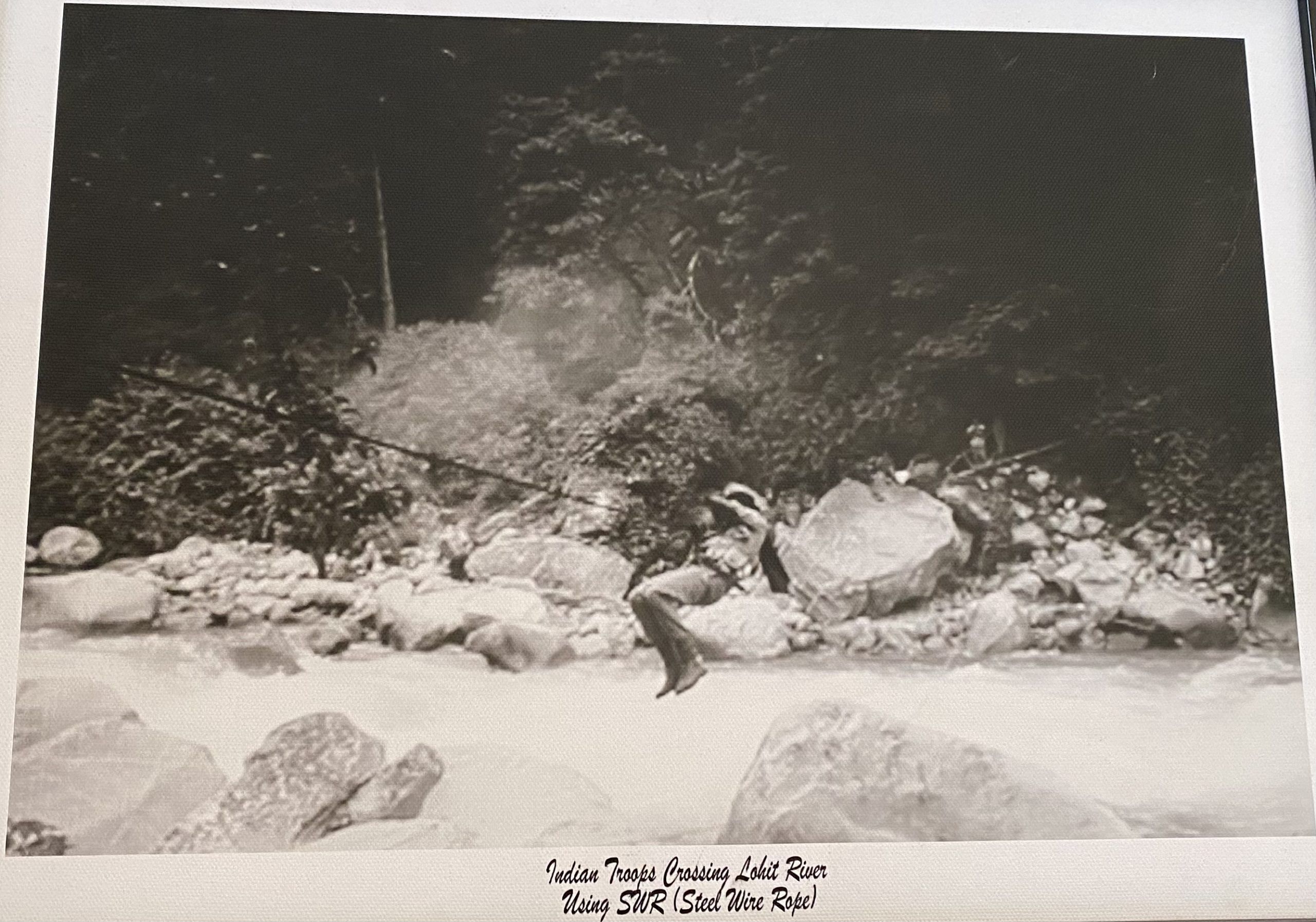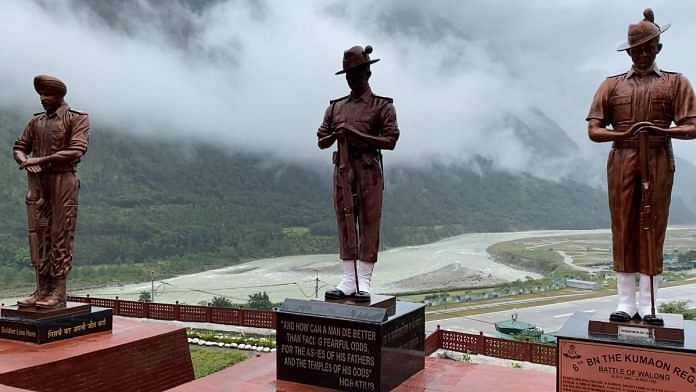Walong, Arunachal Pradesh: At Walong, one of India’s easternmost villages in Arunachal Pradesh, three bronze statues stand tall in the rain against the background of the misty and looming Himalayas. These statues are built in honour of those who died in the Battle of Walong in 1962.
On 21 October 1962, just before midnight, Chinese soldiers began shelling artillery and volleying gunfire onto Indian posts at Kibithu from their bunkers some 700 m away. Soon, a full battalion of Chinese soldiers launched their attack on Indian jawans.
Despite being outnumbered, the 3-inch Mortar Detachment unit of the 6 Kumaon Regiment — one of the oldest infantry regiments of the Indian Army — fought to hold off the Chinese advance. But the outgunned unit was soon asked to withdraw to Walong, India’s official history of the 1962 war, published by the Ministry of Defence in the early 1990s, says.
Thus began India’s 3-week-long heroic defence of Walong from 23 October to 16 November — a battle that went down in history as the only Indian counterattack during the 1962 war.
After Tawang, Walong was China’s main offensive in the eastern sector during the war.
For three weeks, soldiers of the 11 Infantry Brigade including 6 Kumaon, 4 Sikh, 4 Dogra, 2/8 Gorkha Rifles, and 3/3 Gorkha Rifles held off the massive Chinese onslaught against all odds and stark imbalances in numbers and firepower.
Colonel N.N. Bhatia (retd.), a military historian and the brother of Vir Chakra awardee Major P.N. Bhatia — one of the heroes of the Battle of Walong — told ThePrint: “It was a counterattack against all odds. We held off the Chinese at Walong despite stark asymmetries.”
“I’ve served at the Line of Control (LoC), the LAC, and the world’s highest battlefield, Siachen. It’s a privilege to protect the borders. But when we’re at a place with such a history of resistance, the inspiration is even higher,” said a soldier posted at Walong, as the rain hammered down on the tin roof of guard posts.

Also Read: From clash at Longju to ‘Operation Leghorn’, how skirmishes built up to 1962 India-China war
The Battle of Walong
Colonel Bhatia (retired) told ThePrint that the battle was challenging from the start. “Even though structural, command and logistical issues stymied the Indian resistance, the soldiers still put up a heroic defence and counterattack at Walong,” he said.
First, there was the fact that the 11 Infantry Brigade was set up only weeks before the battle, he said. Then, soldiers had to deal with limited equipment and ration, and no artillery support.
In addition, they also dealt with frequently changing leadership structures. “Despite these problems, the soldiers gave the Chinese a bloody nose,” Bhatia explained.
In their research paper published in 2014, Major General G.G. Dwivedi (retd.) and Major General P.J.S Sandhu (retd.) say that as Indian soldiers withdrew to Walong on 22 October 1962, D company of 6 Kumaon under the charge of Lieutenant Bikram Singh Rathore was ordered to take a screen position at Ashi Hill to deter the Chinese advance, the paper, titled ‘1962 War — Operations in the Walong Sector’, said.
A screen position is taken up to deceive an enemy in battle.
Consequently, the soldiers from 6 Kumaon at Ashi Hill inflicted serious casualties on the Chinese, leading to more than 70 deaths.
However, on 25 October, the Chinese made contact and the screen withdrew. Then between 25 October and 27 October, the soldiers of 4 Sikh and 2/8 Gorkha Rifles held off repeated Chinese attacks, sources in the army said.

Counterattack at Tri-Junction
Between 28 October and 13 November, there was a lull in the battle, an army officer serving in Walong told ThePrint.
“This is where the battle changed its course,” the officer said. “The momentum shifted due to a lack of Indian reinforcements in personnel and firepower.”
On 25 November, Chinese reinforcements began to arrive, a senior army officer said. This meant more troops and increased artillery support for the Chinese army. They also moved troops from other sectors to Walong, giving them an advantage, the officer said.
In their research paper, Major General Dwivedi (retd.) and Major General Sandhu (retd.) explain that through aggressive patrolling, the Chinese captured the strategic heights of Yellow and Green Pimple, which are located above Walong.

In an attempt to counter this, by 12 November, the 6 Kumaon took up positions at Tri-Junction, a place situated above both Yellow and Green Pimple.
From here, the Indian Army launched a counterattack to drive the Chinese out of the Yellow and Green Pimple. Two days later, on 14 November, the 6 Kumaon launched a second counterattack but, outnumbered and coming under artillery fire and mortar attack, they were forced to fall back.
In its official account of the war, the Indian government says that of 200 men who left Tri-Junction that morning, only 90 survived.
Between 15 November and 16 November, the Chinese targeted the Indian forces at the Tri-Junction five times — including using 120mm mortars for shelling. The official account also says that the Chinese also strategically cut off supply line — the route through which goods and equipment were transported to the Indian Army.
Although a company of 4 Dogra was deployed to assist the 6 Kumaon, the heavy casualties on the Indian side forced Brigadier N.C. Rawlley, the commander of the 11 Infantry Brigade, to withdraw Indian troops from Walong on 16 November.
(Edited by Uttara Ramaswamy)
Also Read: A face-off in Galwan, 60 years ago: How border brinkmanship triggered 1962 India-China war



